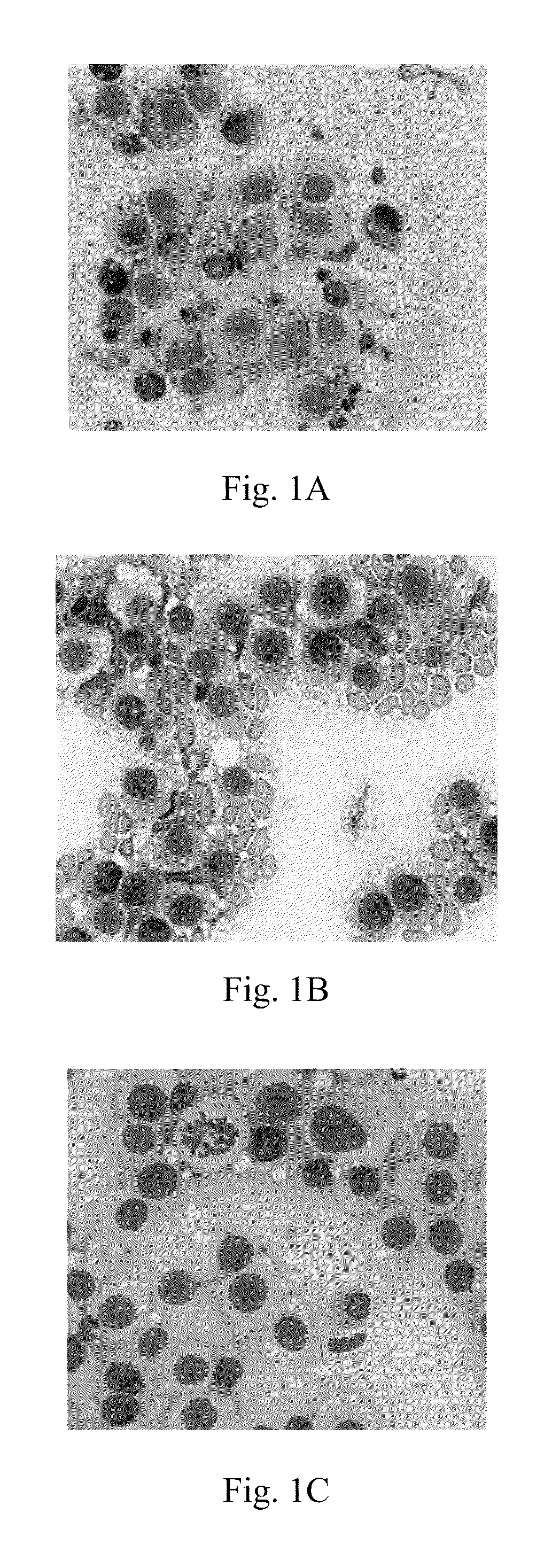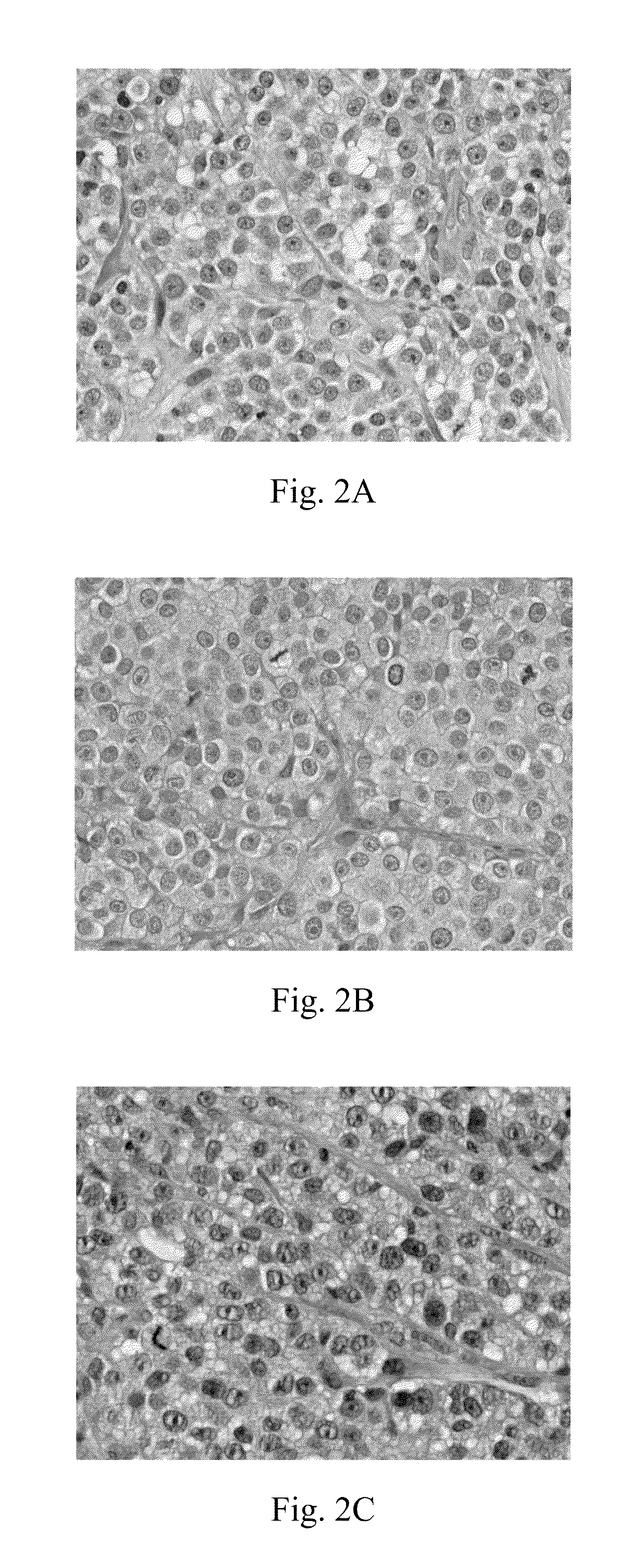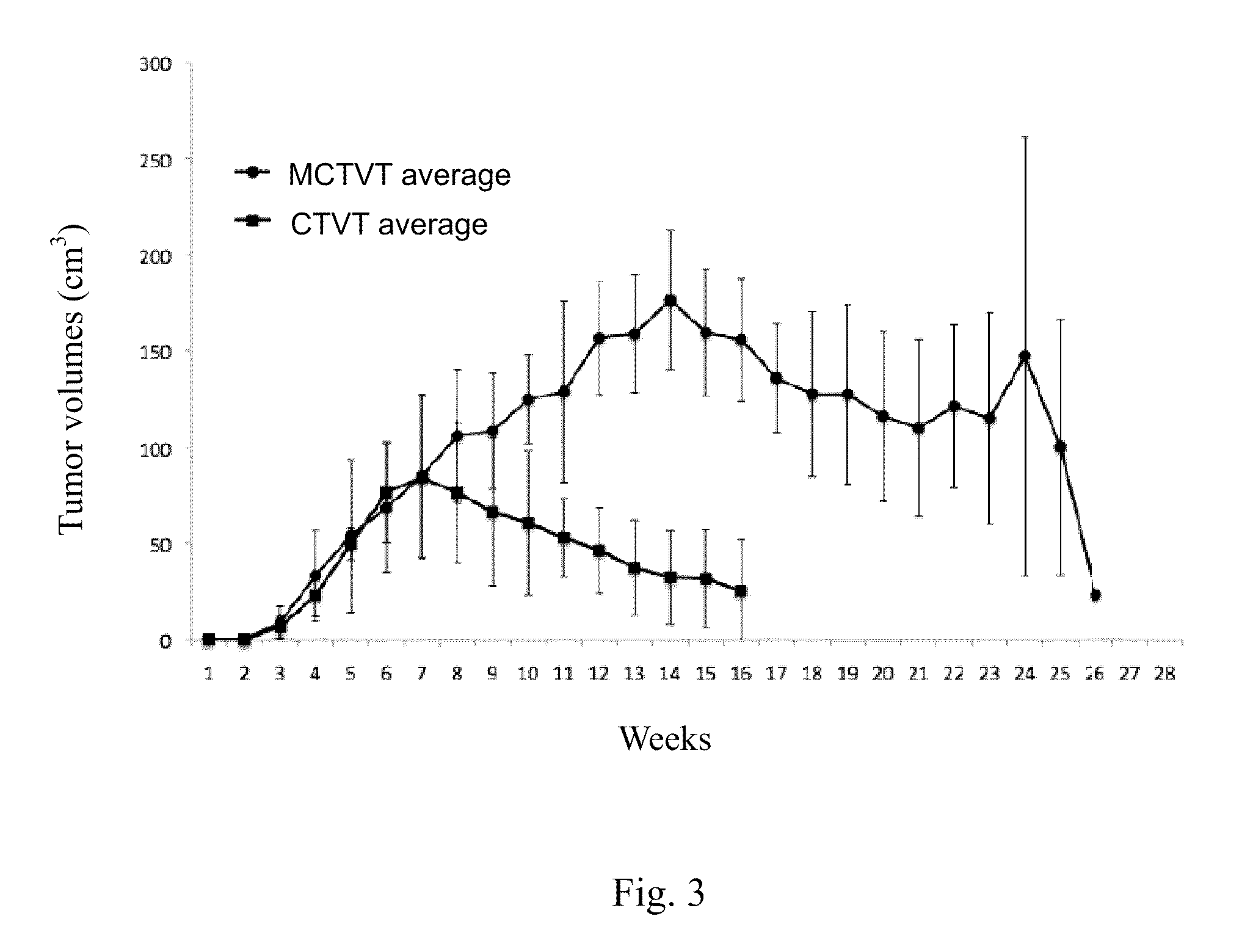Biomarker for diagnosis of canine cancer
a biomarker and cancer technology, applied in biochemistry apparatus and processes, organic chemistry, sugar derivatives, etc., can solve problems such as canine cancer, canine death, and inhibition of organ functions or failures, so as to avoid human errors, shorten the time required for diagnosis, and avoid potential bias of canine cancer.
- Summary
- Abstract
- Description
- Claims
- Application Information
AI Technical Summary
Benefits of technology
Problems solved by technology
Method used
Image
Examples
example 1
Establishment of Animal Model and Cytology and Histology Analysis
[0035]The present invention was related to grow CTVT tumor in canine and mouse respectively, then re-inoculate the XCTVT of the mouse back into canine to obtain MCTVT, so as to observe and compare cytology and histology characteristics of CTVT in thus obtained animal model.
[0036]To carry out cytology analysis, first prepared single cell suspension of various tumors and then stained for visual observation. Tumor mass obtained from various animal models were cut into small pieces and placed in RPMI1640 medium (Gibco-Invitrogen, USA) supplemented with 10% bovine serum (HyClone, USA), 1% penicillin, streptomycin and amphotericin (Sigma, St. Louis, Mo., USA). Next, using a stainless mesh cloth to press the tumor mass and filtered through two-layered cheese cloth (pore size: 190 μm) to obtain single cell suspension. 8 ml of single cell suspension was overlaid onto 4 ml of 42% Percoll™ gradient (GE Healthcare Bio-Science Corp...
example 2
Selection of Biomarkers for CTVT Diagnosis
[0050]Although MCTVT and CTVT had similar cytological and histological characteristics and MCTVT could express LINE / c-myc gene fragment of CTVT, MCTVT tumor growth exhibited high aggressiveness. To compare variation in gene expression between MCTVT and CTVT and to determine the cause that triggers malignancy of MCTVT, the present invention used GeneChip® Canine Genome 2.0 microarray to analyze and compare gene expression in MCTVT and CTVT.
1. Analysis and Comparison of Gene Expression in MCTVT and CTVT
[0051]To perform RNA extraction, examples of the present invention used TRIzol reagent and the extraction method followed the prior publications (Wang et al., 2009) and manufacturer's protocol.
[0052]CTVT and MCTVT tumor tissues in P-phase and R-Phase were surgically excised under sterile condition. Tissue specimens were ground and suspended in TRIzol reagent. Vortex then placed at room temperature for 10 minutes. After chloroform extraction, RNA...
examples 3
Confirmation of Biomarkers for CTVT Diagnosis
[0064]The present invention applied real-time PCR to analyze mRNA expression of KMO gene in thirty-five canines that had infected with mammary gland tumor (MGT), and to evaluate the relationship between KMO gene expression and tumor malignancy.
[0065]Thirty-five tumor tissues from spontaneous cases of MGT (obtained from National Taiwan University Veterinary Teaching Hospital and National Chung Hsing University Veterinary Teaching Hospital) were collected. These specimens were classified as benign or malignant based on histopathology test. Clinical stages of these tumor tissues were also classified according to TMN system of World Health Organization (referring to Table 4). Among which seven MGT tissues were benign and twenty-eight tissues were malignant.
[0066]
TABLE 4Clinical stage of MGTClinical TNM Stage of Canine MGTT: primary tumorT1T23~5 cm maximum diameterT3>5 cm maximum diameterN: regional LN statusN0No histological metastasisN1Histo...
PUM
| Property | Measurement | Unit |
|---|---|---|
| pore size | aaaaa | aaaaa |
| thick | aaaaa | aaaaa |
| thick | aaaaa | aaaaa |
Abstract
Description
Claims
Application Information
 Login to View More
Login to View More - R&D
- Intellectual Property
- Life Sciences
- Materials
- Tech Scout
- Unparalleled Data Quality
- Higher Quality Content
- 60% Fewer Hallucinations
Browse by: Latest US Patents, China's latest patents, Technical Efficacy Thesaurus, Application Domain, Technology Topic, Popular Technical Reports.
© 2025 PatSnap. All rights reserved.Legal|Privacy policy|Modern Slavery Act Transparency Statement|Sitemap|About US| Contact US: help@patsnap.com



